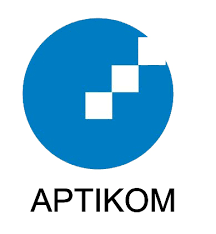Study On Implementation Of Watergate Control System From Manual To Automatic Based Arduino Nano ATmega328
DOI:
https://doi.org/10.18196/eist.v5i1.22424Keywords:
arduino, turbidity, controlAbstract
The system for processing river water into clean water by operating sluice gates which are controlled manually by operators often causes problems (human error), so a system must be created that is capable of controlling sluice gates automatically. The turbidity sensor detects water turbidity which is then accepted by the Arduino nano as the basis for controlling the water gate. In this research, data collection techniques were carried out using interviews with resource persons (operators), observation and literature study. After the automatic sluice control system based on the Arduino nano ATmega328 was implemented, the results obtained were: When the water conditions are muddy and murky, relay one is "on", relay two is "off" (the sluice gate is closed), while when the water conditions are normal and clear then the relay two "on" relays and one "off" relay (open floodgate). In this way, we no longer just have to rely on the operator to control the sluice gate, so that the water treatment process can be more optimal and efficient
References
Andrianto, H. dan Darmawan, A. 2016. Arduino Belajar Cepat dan Pemrograman. Informatika Bandung.
Arianto, Dony “ Analisis Kebutuhan Air Bersih dan Ketersediaan Air Bersih dipipa Sumur Dalam Banjarsari PDAM Kota Surakarata Terhadap Jumlah Pelanggan”. Skripsi. Surakarta: Jurusan Teknik Sipil, fakultas Teknik Universitas sebelas maret
Dwiyanto, Rio , 2019, Prototype Pengendali Pintu Air Sungai Secara Otomatis Menggunakan Arduino Dalam Memonitoring Ketinggian Dan Arus Air, USM.
Juniadi, Yulian Dwi Prabowo. Project Sistem Kendali Elektronik Berbasis Arduino. 2018, Lampung: Anugrah Utama Raharja.
Luthfi, Muhammad “Rancang Bangun Sistem Kontrol Listrik Rumah 0N/OFF menggunakan Raspberry Pi dan Smart Phone”. Skripsi. Jurusan Teknik Elektro, Fakultas Teknik Universitas Muhammadiyah Lampung 2017
Priyatna, Agung Teguh, Asril Basry , 2021, Prototype Sistem Pengendalian Pintu Air Otomatis Dengan Menggunakan Arduino Uno, UPI



